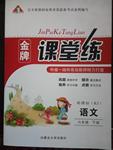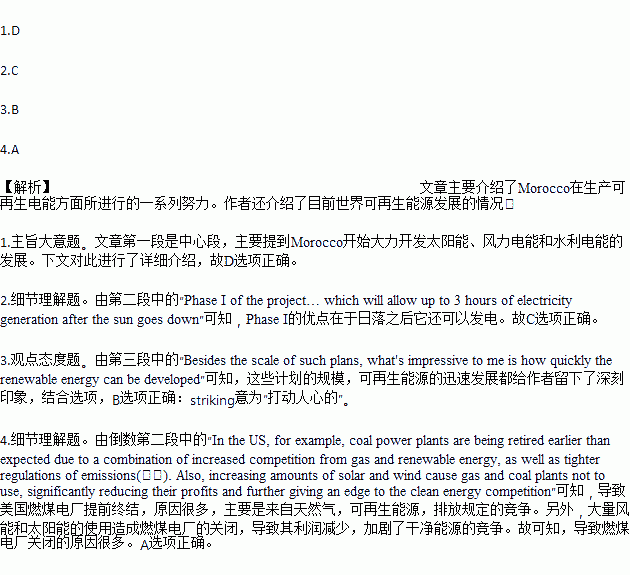题目内容
Morocco has a lot of sun, a lot of deserts and a high demand for imported fuel. And that's why the Moroccan government is moving ahead with a huge concentrated solar power plant near the desert city of Ouarzazate — one of four plants in total which, when completed, will have generating capacity(发电量) of 580MW. Combined with the country’s wind and hydro-power (水力发电) efforts, Morocco’s ambitious solar push will mean the country will get close to 50% of its electricity from renewable generation as early as 2020.
Phase I of the project, the 160MW Noor l, is going to start generating electricity next month and includes a capacity for molten sand energy storage which will allow up to 3 hours of electricity generation after the sun goes down. Phases 2 and 3 will have the capacity for up to eight hours of storage, meaning that solar energy really could be used to power homes around the clock.
Besides the scale of such plans, what’s impressive to me is how quickly the renewable energy can be developed. What other forms of energy could so greatly change a country’s energy composition in just a few short years? Not only should this be an encouraging sign for those of us who favor renewable energy, but it also should give reason for would-be investors in traditional fossil fuel generating industry.
If renewable energy costs continue to fall, even existing(现有的) coal and gas plants will find themselves limited by newer, cleaner forms of energy that can be increased rapidly.
Interestingly, some analysts suggest this is happening already. In the US, for example, coal power plants are being retired earlier than expected due to a combination of increased competition from gas and renewable energy, as well as tighter regulations of emissions (排放). Also, increasing amounts of solar and wind cause gas and coal plants not to use, significantly reducing their profits and further giving an edge to the clean energy competition.
If this proves to be the case in North Africa too, Morocco's solar ambitions could help transform the energy system well beyond its own borders.
1.What's the main theme of the passage?
A. Solar energy is fully developed in Morocco.
B. There are advantages of developing solar energy.
C. Morocco is a country with quantities of deserts.
D. Morocco's efforts to generate renewable electricity.
2.What is the advantage of Phase l?
A. Its energy storage can last up to three hours.
B. It has the capacity for as many as eight hours.
C. It continues producing electricity after the sun sets.
D. It is going to begin generating electricity in a month.
3.What does the author think of the renewable energy development?
A. Upset. B. Striking. C. Sensitive. D. Doubtful.
4.Coal power plants in the US are being retired earlier than expected because of ________.
A. various reasons B. heavy pollution
C. fierce competition D. the government's limitation
 同步学典一课多练系列答案
同步学典一课多练系列答案 经典密卷系列答案
经典密卷系列答案 金牌课堂练系列答案
金牌课堂练系列答案 三新快车金牌周周练系列答案
三新快车金牌周周练系列答案

